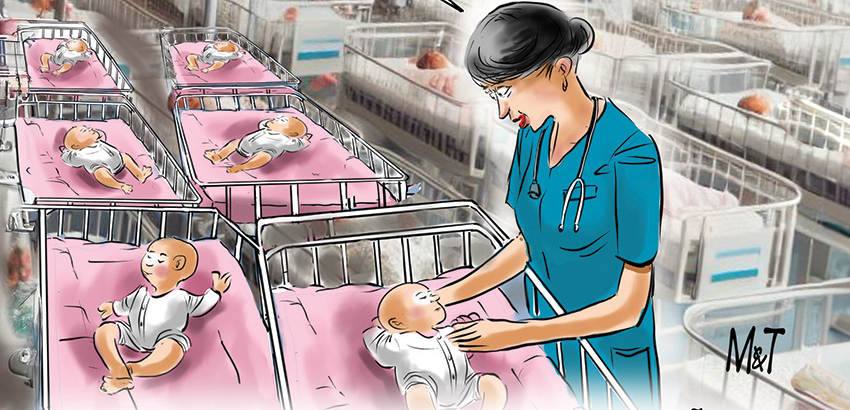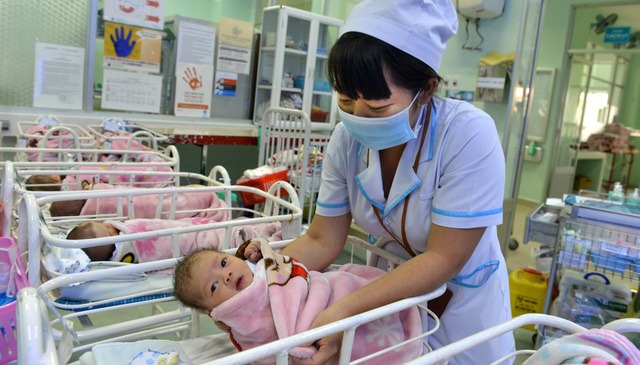
This illustrative photo shows children at a private preschool in Ho Chi Minh City, southern Vietnam. Photo: My Dung
The ratio leads to projections that by 2034, the country may have 1.5 million more men than women.
The issue was a key focus at the Dissemination Workshop on the National Vital Statistics Report for Vietnam (2012–24), held in Hanoi on Friday.
Along with this, Vietnam's total fertility rate is decreasing and lower than the replacement birth rate of 2.1 children per woman.
At the workshop, Nguyen Thi Thanh Mai, deputy head of the Population and Labor Statistics Department, stated that during the 2021-24 period, the sex ratio at birth is 109.8 boys for every 100 girls.
Specifically, in 2024, the gender imbalance at birth is higher, at 110.7 boys per 100 girls.
During the period, imbalance sex ratios at birth were commonly observed in several provinces and cities in the northern region and the Red River Delta, including Bac Ninh, Vinh Phuc, Hanoi, Hung Yen, Bac Giang, Hai Duong, Son La, Lang Son, and Phu Tho.
In some localities, the ratio reached nearly 120 boys per 100 girls.
In contrast, provinces and cities in the southern region reported sex ratios at birth ranging from 105 to 108 boys per 100 girls, according to Mai.
Population experts have predicted that if the problem is not controlled, Vietnam will have 1.5 million more men than women by 2034 and 4.3 million more men than women by 2050.
The imbalance will force more men to either marry late or stay single, they added.
Dr. Pham Vu Hoang, deputy director of the Ministry of Health’s General Office for Population and Family Planning (GOPFP), previously warned that the unbalanced sex ratio at birth will have a direct and profound impact on the national population structure, leading to social consequences such as early marriage among women, divorce, remarriage, gender-based violence, and human trafficking.
The main cause of men outnumbering women is the notion of 'valuing men above women,' a gender prejudice that has long been ingrained in the Vietnamese mindset.
Additionally, the abuse of scientific and technological advances that allow expecting parents to choose the sex of the fetus has contributed to worsening the situation, according to Dr. Hoang.
Mai Xuan Phuong, former deputy director of Education and Communication at the Ministry of Health's Department of Population, commented that many Vietnamese people still prefer sons in the context of a sharp decline in the birth rate.
In addition, the long-lasting concept of having sons to continue the family line and worship ancestors and the underestimation of the role of women in the family and society have further increased gender inequality.
Vietnam has set a target to pull down the at-birth gender imbalance to a natural ratio of below 109 boys to 100 girls by 2030, according to the GOPFP.





Max: 1500 characters
There are no comments yet. Be the first to comment.